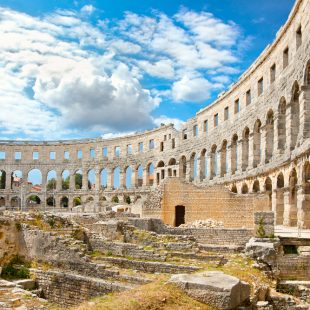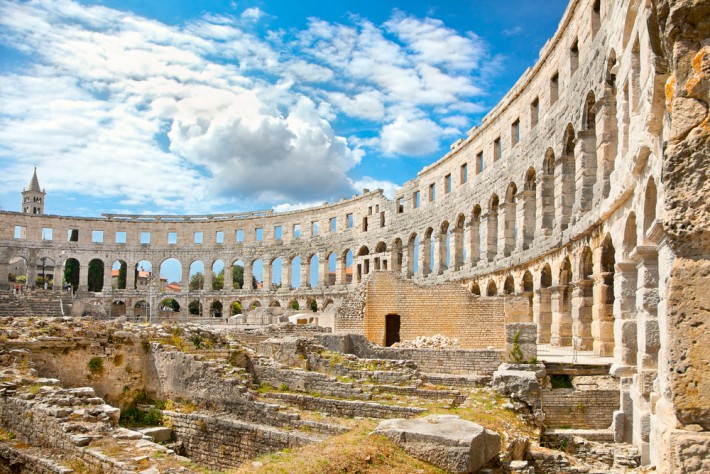
The medieval ruins of Istria
Croatia is a country with a rich historic heritage. Testament to Croatia’s opulent cultural and historical heritage are the many medieval ruins and settlements that are scattered across this diverse and fascinating country. The Istrian peninsula on the northern end of Croatia’s Adriatic coastline is no exception and is home to many fantastic medieval ruins that are waiting to be explored.
Dvigrad
The ruins at Dvigrad is one such site. Due to its strategic position and its proximity to a source of water, which created fertile vegetation, Dvigrad was inhabited during prehistoric times.
Following a series of plague outbreaks, the residents of Dvigrad abandoned their town in the 17th century. Two castles, known as Parentino and Moncastello, were once present in Dvigrad, but after the town was abandoned, they fell to rack and ruin.
The remains of the once walled town of Dvigrad offer incredible insight into life in the Middle Ages in Istria.
The Amphitheatre of Pula
This magnificent construction is the most visited attraction in the seafront city of Pula on the tip of the Istrian peninsula. The amphitheatre was built in the 1st century AD when Emperor Vespasian reigned.
Many a brave gladiator fought in this great amphitheatre, much to the delight of the spectators.
The amphitheatre of Pula is considered to be one of the best preserved amphitheatres in the world, and today is a venue for many a legendary concert.
The Fort of Monkodonja
Despite not being discovered until 1953, this magnificent ancient hill fort settlement dates back to the 1800BC.
The Fort of Monkodonja is divided into three separate parts – the upper and lower town and the Acropolis. The Fort is surrounded by drystone walls and is widely considered one of the best examples of a prehistoric hill fort settlement in the whole of Istria.
It has been estimated that approximately 1000 people once lived in this ancient site.



